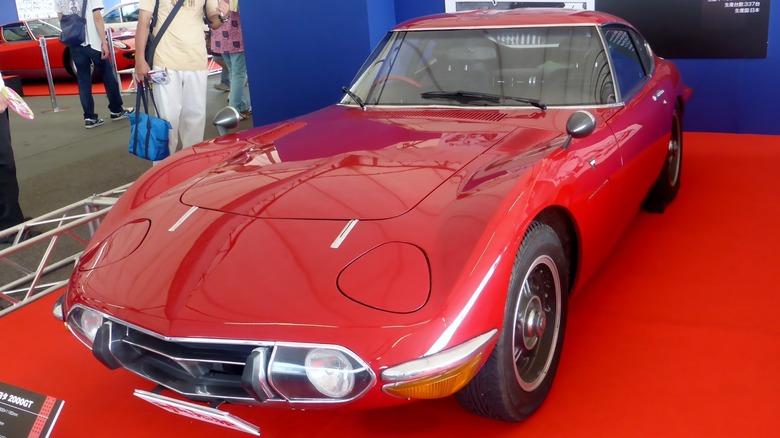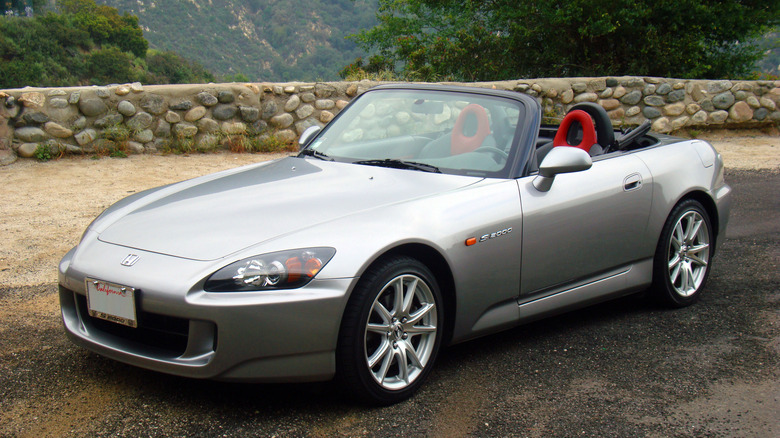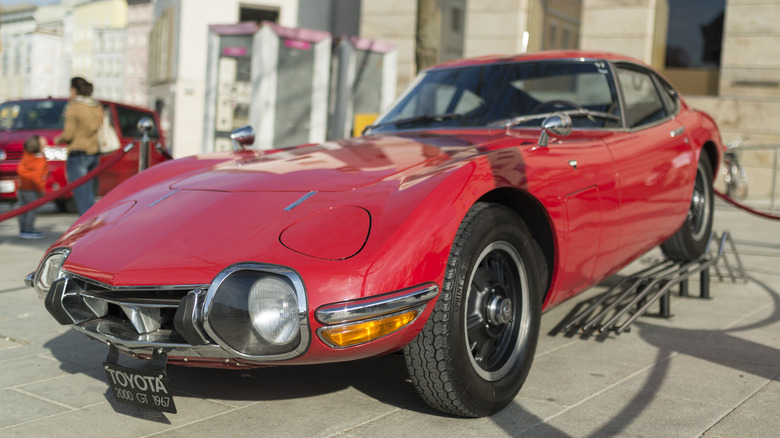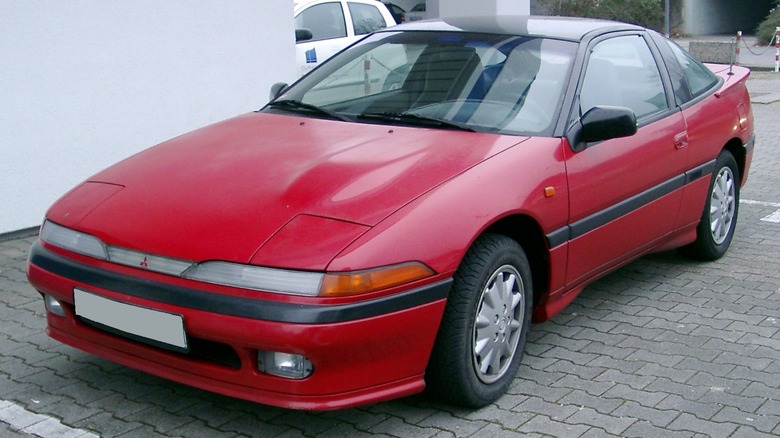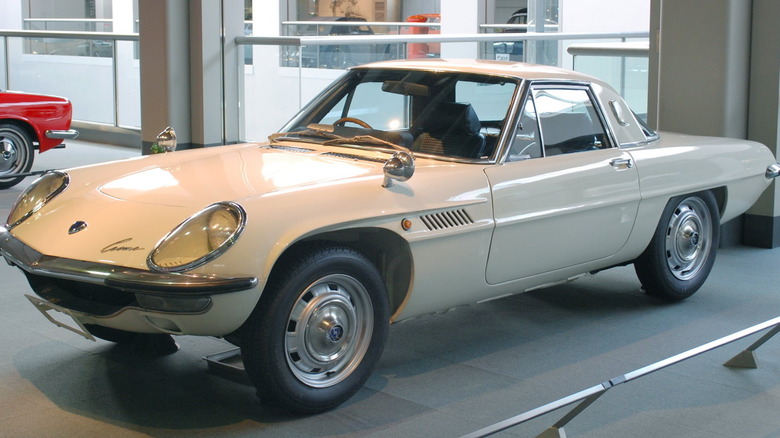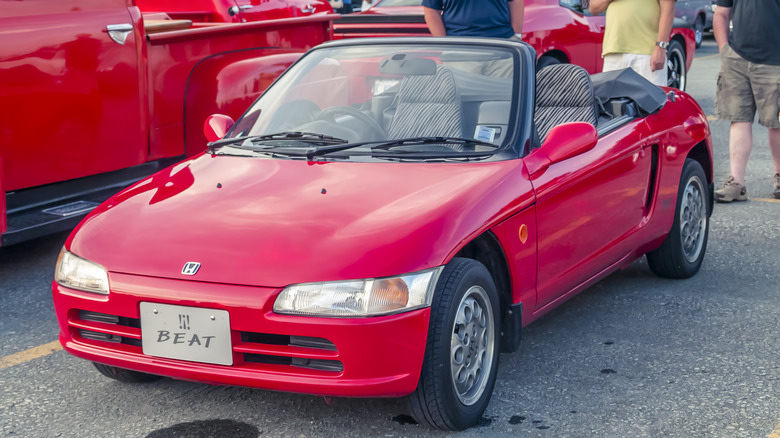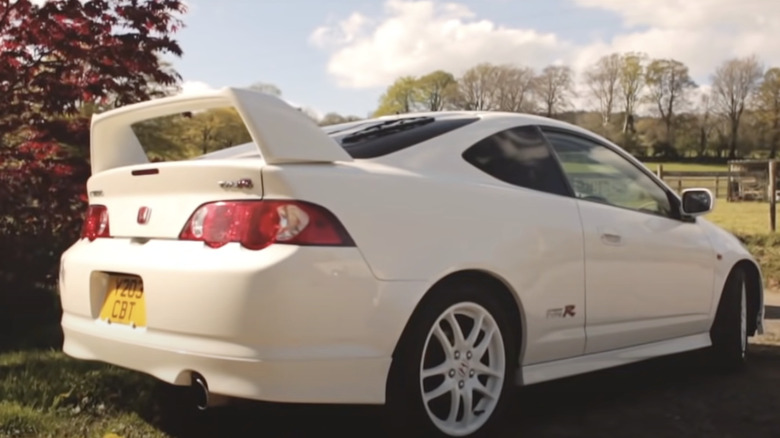6 Legendary Japanese Classic Sports Cars Worth Collecting (If You Can Find Them)
Japanese cars are primarily known for their dependability and efficiency, but automakers from the Land of the Rising Sun have also turned out some of the most exciting sports cars in the history of the industry. F&I Tools ranked Toyota as the top automaker in the world last year, with sales of over 10 million vehicles worldwide. Honda and Nissan also landed in the top eight, and these three manufacturers have produced their share of gorgeous and fun models over the years. The five oldest car companies in the world all have European roots, although Mitsubishi produced Japan's first production car, the Model A, in 1917.
That model had a wooden body and was built using hand tools. Auto technology and manufacturing has come a long way since then, and most cars are now built on sophisticated assembly lines. Those advances have brought us some of the world's most exciting cars, but their performance and popularity makes many of those models hard to find on the secondhand market.
[Featured image by Tokumeigakarinoaoshima via Wikimedia Commons|Cropped and scaled|Public Domain]
The Honda S2000 enjoyed moderate sales succcess over its brief run
Honda introduced the S2000 roadster in 1999 to some acclaim, thanks in large part to its 234-horsepower FC20 engine. That power was sent to the road via a six-speed manual transmission and limited-slip rear differential. Torque output was a modest 161 lb-ft, so in 2004 Honda replaced the FC20 with the 2.2-liter F22C1 engine, which had a lower redline but produced 10% more torque. Honda sold close to 10,000 S2000s in 2001 and 2002 in the U.S. alone, but those numbers dipped to a little over 7,000 for the next three years. The recession that soon followed put a huge dent in frivolous car purchases, and in 2008, Honda sold only about 2,500 S200s.
The next year, sales dropped below 800 units, and the S2000 was dropped after the 2009 model year.
The S2000's decent original sales numbers make it reasonably affordable today, but there aren't many from either generation to be had. Classic.com shows just 13 listings of first-generation models, and only nine after the upgrade to the larger engine. The going price for both models is about $30,000, although the more powerful version usually sells for a few thousand more than its predecessor.
[Featured image by Rich Niewirowski via Wikimedia Commons|Cropped and scaled|CC-By 2.5]
The Toyota 2000GT is worth more than a million dollars today
Long before Honda included the number 2000 in the model name for its sporty roadster, Toyota used it for a sports coupe it developed in partnership with a third Japanese automaker. The first two Japanese Grand Prix races in 1963 and 1964 generated interest in performance cars in the country, and Toyota and Yamaha teamed up in 1965 to build a car that could be equally useful on the street and the racetrack. A prototype was exhibited at the Tokyo Motor Show that October, and a year later the car set more than a dozen E-class speed records during a series of time trials. It was released to the public in May 1967, and a month later the 2000GT had a starring role in the James Bond flick "You Only Live Twice."
The 2000GT had a double-wishbone suspension, rack-and-pinion steering, and a dual overhead cam inline six-cylinder engine that displaced an even two liters and produced 150 horsepower. That was enough to get the sub-2,500 pound coupe from 0-60 in 8.6 seconds and to a top speed of 136 mph. Production ran only through 1970 and was limited to a monthly output in the low teens, making this model quite rare and valuable today. Classic.com lists just nine sales of 2000GTs over the past five years, at an average price of $1.1 million.
The first-gen Mitsubishi Eclipse is almost as rare as a solar eclipse
Mitsubishi currently uses the Eclipse badge on an affordable crossover that got an update in 2022, but the name was first applied to a North American-designed sport coupe that appeared in 1990. The original Eclipse came in four variants: base, GS, the GS-T, and the all-wheel drive GSX. All but the GSX were front-wheel drive, and the GS-T and GSX models shared a turbocharged 4G63 engine that displaced 2.0 liters and put out as much as 195 horsepower. With a curb weight of under 2,800 pounds, that was enough to get the Eclipse from 0-60 in less than seven seconds. That was almost two seconds quicker than the 1990 Chevy Camaro IROC-Z, a car that was purpose-built for racing.
The Eclipse was not named after the astronomical phenomenon but rather for a record-setting British racehorse from the 1700s. It was developed as part of the Diamond-Star Motors (DSM) partnership with Chrysler, which also brought us the Eagle Talon and Plymouth Laser.
The Eclipse went through generational updates in 1995, 2000, and 2006, and was discontinued after the 2011 model year. First-gen examples are nearly impossible to find today. Classic.com shows no current listings for this model, and just six sales over the past five years. If you can hunt one down, though, it probably won't cost you much — those six examples went for an average of less than $12,000.
[Featured image by Rudolf Stricker via Wikimedia Commons|Cropped and scaled|CC-By 3.0]
The Mazda Cosmo was rotary-powered perfection
The Mazda Cosmo Sport got a dramatic public introduction when company president Tsuneji Matsuda drove one into the 1963 Tokyo Motor Show. The sleek, bug-eyed beauty was released to the public in Spring 1967 with the first twin-rotor engine to ever go in a production car. The 982-cubic centimeter 10A powerplant put out 130 horsepower and 103 lb-ft of torque. With a curb weight of just over 2,000 pounds, that was sufficient to get the Cosmo Sport from 0-60 in 8.2 seconds. The Cosmo Sport had a short run through 1972, and over that time each of the 1,500 or so examples were built by hand.
Other versions of the Cosmo followed in the years afterward. The Cosmo AP (for Anti-Pollution) won Motor Fan Magazine's Car of the Year award in its release year of 1975, and the luxury Cosmo L followed two years later. In 1990, Mazda presented the Eunos Cosmo, which had a twin-turbo three-rotor engine and the first-ever in-dash GPS.
The Eunos Cosmo hung around through 1996, but even with this extension to the Cosmo's run, the model is hard to find. Classic.com shows no current listings and just 13 Cosmo sales in the past five years, for an average of just under $76,000.
[Featured image by Mytho88 via Wikimedia Commons|Cropped and scaled|CC-By 3.0]
The Honda Beat is a bit of underpowered fun
Honda introduced the Beat in its home market in 1991 as a two-seat kei car. The quirky little roadster had a three-cylinder engine that sat right at the 660 cubic centimeter limit for the class, but Honda didn't opt for the turboboost used by many of its kei car competitors. Instead, Honda put individual throttle bodies on each cylinder, which gave the engine an output of 97 horsepower and 63 lb-ft of torque. Those aren't exactly eye-popping numbers, but when paired with the five-speed manual transmission, the Beat made for a fun drive. Fun doesn't necessarily mean fast, though. The Beat was electronically limited to a top speed of 83 mph and took a full 13 seconds to get to 60 mph from a stop. Add in the limited passenger and cargo space, and you have a car made more for quick city cruises than long family vacations.
The Beat was only in production until 1996, meaning the 25-year import limit on the model has expired. If you can adjust to driving a right-hand drive car on American roads, you can find plenty of previously imported examples in the $5,000-$10,000 range.
The Mugen RR is no ordinary Honda Civic
The Honda Civic is one of the most popular nameplates in automotive history, with more than 30 million sold since its introduction in 1972. While most Civics are efficient and reliable errand machines, Honda has made a few special versions geared toward performance. One such beast is the Mugen RR, a Japanese Domestic Market model that is tuned to produce 243 horsepower and 160 lb-ft of torque. Those are modest but noticeable improvements over the Civic Type R, which makes 225 horsepower and 158 lb=ft of torque. The Mugen RR also has upgraded air delivery and valve systems, as well as some weight-saving carbon composite and aluminum body panels.
Inside are carbon Recaro seats, but all of these performance-enhancing goodies are well out of reach for American buyers. The Civic Mugen RR is a 2008 model, meaning it won't be eligible for import for almost another decade. Even with patience, you might not be able to pry one from its enthusiastic Japanese owner. The 300 that were available sold out in ten minutes, according to Motor Trend.
